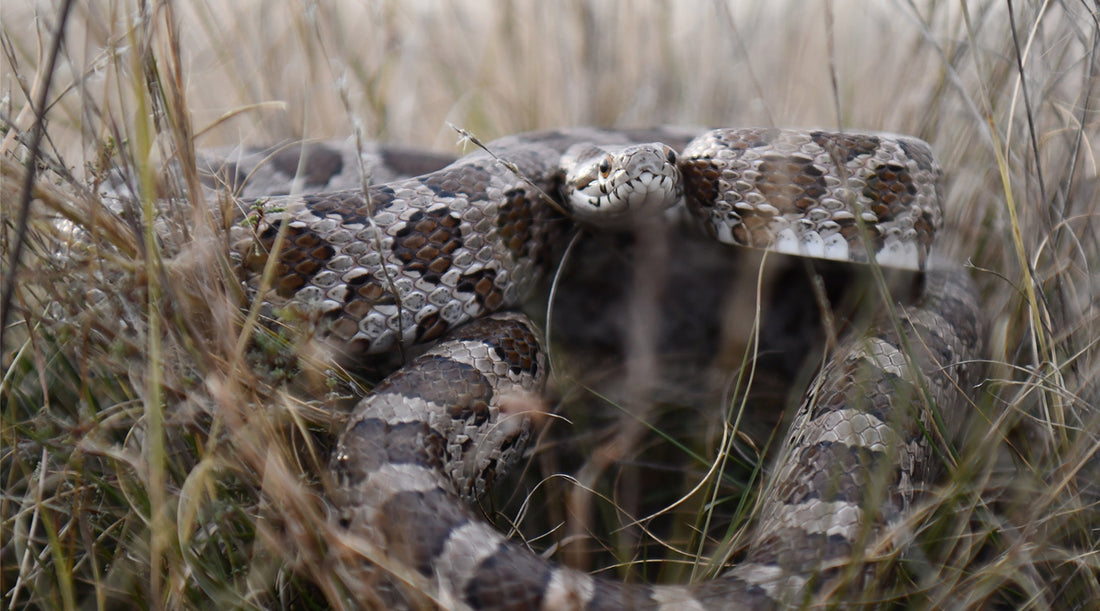
5 Trail Dangers Every Dog Hiker Must Prepare For
Share
Last week my dog Lola got attacked by a snake. Her face swelled up rapidly and I needed to do something fast.
We were 5 miles from our home with no one around to help us. Then I remembered, I had something in my backpack that would keep her stable until I could take her to the hospital.
The vet who helped Lola told us something chilling. The venom from the snake that had bitten her was poisonous and, if I had not treated her sooner, she could’ve been paralyzed or even dead.
"She could've been paralyzed or even dead."
What saved Lola’s life was a Dog First Aid Kit.
I was lucky to have a kit that contained an antihistamine, which kept her stable until I could get her to a hospital.
While I could’ve never imagined Lola getting bitten by a snake, accidents do happen.
I was surprised to learn that there are 5 common trail dangers that you must prepare for when hiking, camping or traveling with your dog.
Threat #1: Non-venomous and Venomous Snake Bites
Snake bites must be treated immediately, which can require anti-venom from an emergency vet.
By carrying antihistamine tablets, you may be able to reduce the allergic reaction brought on by snake venom while you transport your dog to the vet.
Threat #2: Ticks
Ticks tend to live close to their hosts, which includes your dog. If untreated, a tick will suck blood slowly for several days.
If the tick contains a disease, this is where the organism will transmit it to your dog.
A tick remover can be used to remove a tick from your dog.
Threat #3: Razor-Sharp Shrubbery
While hiking with your dog, you’re likely to encounter lots of new plants.
You might not realize some of these plants can be dangerous, or even deadly to your dog.
Sharp plants with thorns and other brush have knife-like points that can leave a deep gash on your dog.
Pull cactus barbs and other objects out with a pair of tweezers.
An open wound is best treated by stopping the bleeding first with non-woven gauze, cleaning it with antiseptic wipes and then using a self-adhering bandage to hold a gauze dressing in place.
For a minor cut, you may choose to continue your hike once bandaged.
If you've bandaged a more serious gash, you have now bought yourself the time to get your dog to the hospital safely.
Threat #4: Extreme Exhaustion and Dehydration
If it’s too hot and your dog can't adequately cool off, then they face some potentially serious health risks, such as organ failure and even death.
Additionally, if your dog is not in shape for the hike, they can easily exert themselves.
Having a collapsible water bowl can greatly help your dog stay hydrated on the trails.
Threat #5: Bone Fracturing and Limp-Inducing Cliffs
Rocky trails and steep cliffs can be a recipe for disaster for your dog.
If your dog obtains a leg injury, having an icepack to reduce the swelling and an emergency blanket can greatly reduce your dog's discomfort while you immediately find the nearest emergency vet.
These items are easy to use and can provide instant relief for your hiking buddy.
At Hiking Dog Co, we say "Adventure More and Worry Less." Our Dog First Aid Kit contains everything you need to care for you pet in an emergency.

WHAT PEOPLE ARE SAYING ABOUT US...
Very happy with this kit. It's got all the essentials packed in a compact pouch making it easy to take along.
Dawn M.
Tess S.
Great company! I bought a tank for myself and the t-shirt with the same design for my husband in navy. We both love them! They are well made and customer service is excellent. We also love helping animal rescue and the parks. I can't wait to see what new designs they come up with.
Jeannine
